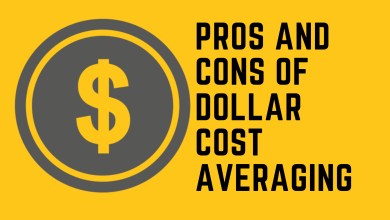The Power of Dollar Cost Averaging in Investment Strategies

Introduction:
When it comes to investing, one of the most effective and widely recommended strategies is dollar cost averaging (DCA). This approach enables investors to mitigate the risks associated with market volatility while maximizing the potential for long-term gains. In this comprehensive guide, we will explore the importance of dollar cost averaging in investment strategies and how it can help you build wealth over time.
What is Dollar Cost Averaging?
Dollar cost averaging is an investment technique where an investor consistently invests a fixed amount of money at regular intervals, regardless of the current price or market conditions. This approach helps investors avoid the common pitfall of trying to time the market, which can be extremely challenging and often leads to poor investment decisions.
The Benefits of Dollar Cost Averaging
- Mitigates the Impact of Market Volatility: By investing a fixed amount regularly, dollar cost averaging allows you to purchase more shares when prices are low and fewer shares when prices are high. This approach smooths out the impact of market fluctuations, reducing the risk of making significant losses during periods of market downturns.
- Takes Emotion Out of Investing: Emotional decision-making often leads to poor investment choices. Dollar cost averaging eliminates the need to constantly monitor market movements and make impulsive decisions based on short-term market trends. Instead, it encourages a disciplined, long-term approach to investing.
- Reduces the Risk of Making Costly Mistakes: Trying to time the market is a challenging task even for experienced investors. Dollar cost averaging eliminates the need to predict market highs and lows, allowing you to invest consistently over time. This reduces the risk of making costly mistakes and increases the likelihood of achieving positive investment returns.
Implementing Dollar Cost Averaging
To implement dollar cost averaging, follow these simple steps:
- Set a Regular Investment Schedule: Determine how often you will invest (e.g., monthly, quarterly) and stick to the schedule. Consistency is key in dollar cost averaging.
- Determine the Investment Amount: Decide on the fixed amount you will invest at each interval. This amount should be affordable and within your budget.
- Automate Your Investments: Set up automatic transfers from your bank account to your investment account to ensure that your investments are made regularly without fail.
Frequently Asked Questions
Q1: Can dollar cost averaging be applied to any type of investment?
Yes, dollar cost averaging can be applied to various investment vehicles such as stocks, mutual funds, exchange-traded funds (ETFs), and more.
Q2: Is dollar cost averaging suitable for short-term investing?
Dollar cost averaging is primarily a long-term investment strategy. It is designed to maximize returns over time and reduce the impact of short-term market fluctuations.
Q3: Does dollar cost averaging guarantee profits?
No investment strategy can guarantee profits. However, dollar cost averaging helps reduce the risk associated with market timing and increases the likelihood of positive returns over the long run.
Conclusion:
Dollar cost averaging is a proven investment strategy that offers several benefits for investors looking to build wealth over time. By removing the emotional aspect of investing and consistently investing a fixed amount at regular intervals, investors can mitigate the impact of market volatility and increase the potential for long-term gains. Remember, investing should always be approached with a long-term mindset, and dollar cost averaging is a valuable tool to help you achieve your financial goals.
References:
- Investopedia: Dollar-Cost Averaging (https://www.investopedia.com/terms/d/dollarcostaveraging.asp)
- Britannica: What is dollar cost averaging?
- Forbes: The Basics of Dollar-Cost Averaging





